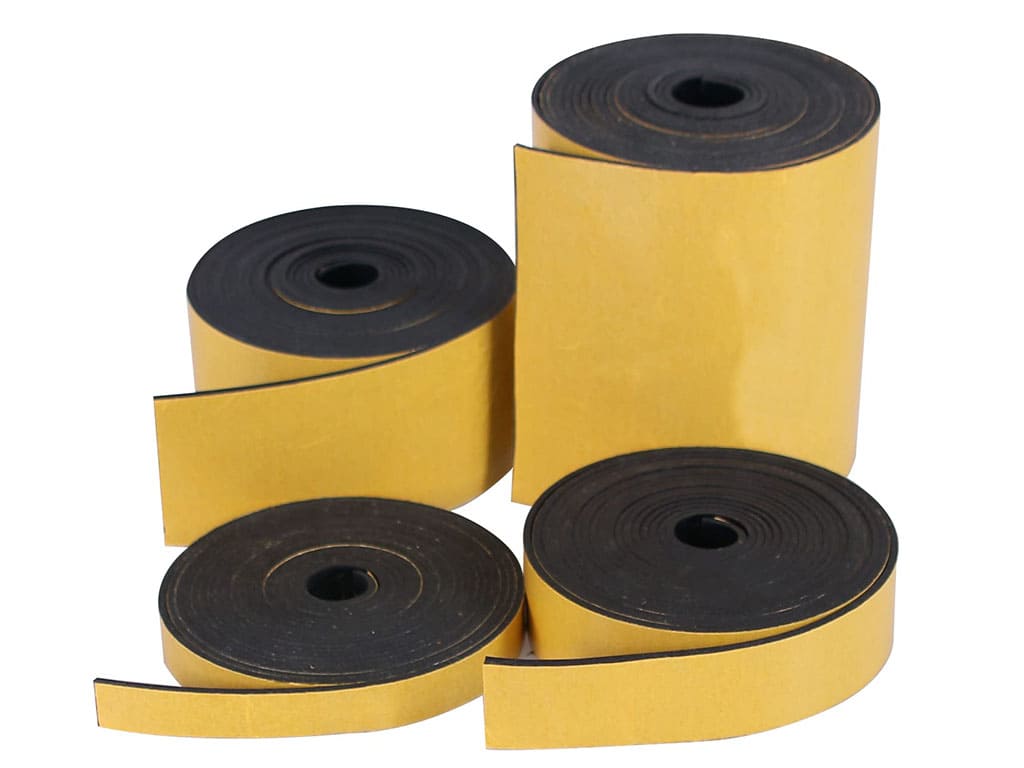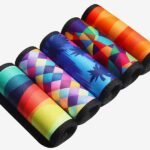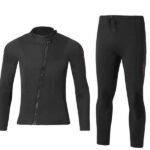Neoprene is a material that has shaped industries ranging from fashion to manufacturing. But understanding its origins and why it became so popular can provide a deeper appreciation of its value. So, when was neoprene invented, and why does it matter?
Neoprene was invented in 1930 by DuPont scientists, led by Dr. Wallace Carothers, during their quest for a synthetic rubber alternative. It revolutionized industries with its unique properties, such as water resistance and durability.
In this article, I will explore what neoprene is, its invention, development, and modern uses, so you can see why it is still a highly sought-after material today.
What Is Neoprene?
Neoprene is a synthetic rubber made through the polymerization of chloroprene. It is known for its flexibility, durability, and water resistance, which make it a versatile material for various applications.
Neoprene is a synthetic rubber that resists water, heat, and chemicals, making it highly durable and ideal for products like wetsuits, koozies, and industrial equipment.
Neoprene is often preferred over natural rubber for its enhanced properties. Its ability to withstand extreme conditions has made it a go-to material for industries that demand both performance and reliability.
Key Features of Neoprene
| Feature | Description |
|---|---|
| Water Resistance | Protects against moisture and water damage. Why is neoprene waterproof? |
| Durability | Resists wear, tear, and environmental factors. |
| Flexibility | Maintains elasticity under stress or heat. |
When Was Neoprene Invented and Who Invented It?
The story of neoprene begins in the early 20th century when the need for synthetic materials became evident. Natural rubber, though widely used, had limitations in supply and performance.
**Neoprene was invented in 1930 by Dr. Wallace Carothers and his team at DuPont. It was the first synthetic rubber to be commercially successful, marking a breakthrough in material science.
The invention of neoprene was a response to the fluctuating availability and high costs of natural rubber. Its creation allowed industries to overcome these challenges while introducing a material with superior characteristics.
Historical Context of Neoprene’s Invention
- The Catalyst: High demand for rubber during the industrial boom.
- The Innovator: Dr. Wallace Carothers, known for his work in polymer chemistry.
- The Outcome: A robust synthetic rubber that transformed manufacturing.
The invention of neoprene not only solved supply issues but also opened new doors for innovation across multiple sectors.
How Was Neoprene Developed?
Developing neoprene was no easy feat. It involved extensive research, experimentation, and collaboration among scientists at DuPont.
Neoprene was developed through the polymerization of chloroprene, a process that creates a strong, flexible synthetic rubber. Its development required overcoming challenges like stability and scalability.
The journey from concept to creation involved refining chemical processes to produce a material that met the high standards of industrial applications.
Steps in Neoprene’s Development
- Discovery of Chloroprene: The key compound that makes neoprene possible.
- Polymerization Process: Combining chloroprene molecules to form a stable rubber.
- Industrial Scaling: Adapting the production process for large-scale manufacturing.
Challenges in Neoprene Development
| Challenge | Solution |
|---|---|
| Chemical Stability | Modified the polymerization process. |
| Production Costs | Streamlined manufacturing methods. |
| Performance Testing | Conducted rigorous quality checks. |
DuPont’s success in developing neoprene laid the foundation for the synthetic rubber industry, setting a benchmark for innovation.
What Is So Special About Neoprene?
Neoprene stands out among materials due to its unique combination of properties. It is not only durable and flexible but also resistant to a wide range of environmental factors.
What makes neoprene special is its ability to resist water, heat, and chemicals while maintaining flexibility and strength. These features make it ideal for demanding applications.
Unlike many materials, neoprene performs well in extreme conditions. It can endure harsh weather, resist damage from chemicals, and remain flexible in varying temperatures.
Unique Properties of Neoprene
| Property | Benefit |
|---|---|
| Waterproofing | Perfect for aquatic and outdoor use. |
| Heat Resistance | Maintains performance in high temperatures. |
| Chemical Resistance | Withstands oils, solvents, and other chemicals. |
| Elasticity | Adapts to stress without breaking. |
These attributes make neoprene indispensable for products that require reliability and longevity, from wetsuits to industrial gaskets.
How Is Neoprene Used Today?
Neoprene’s versatility has allowed it to evolve far beyond its original applications. Today, it is used in industries ranging from fashion to construction.
Neoprene is used in a wide variety of products, including wetsuits, laptop sleeves, koozies, medical braces, and industrial seals, thanks to its durability and adaptability.
Common Applications of Neoprene
| Industry | Application |
|---|---|
| Sports | Wetsuits, gloves, and protective gear. |
| Fashion | Bags, laptop sleeves, and accessories. |
| Medical | Braces, supports, and orthopedic devices. |
| Automotive | Gaskets, hoses, and seat covers. |
Conclusion
Neoprene, invented in 1930 by DuPont scientists, has revolutionized industries with its unique properties and adaptability. From its origins as a synthetic rubber substitute to its current role in countless applications, neoprene’s journey reflects the power of innovation.
At Szoneier, we specialize in manufacturing high-quality neoprene products, from koozies to laptop sleeves and beyond. With years of experience and advanced production capabilities, we are the trusted partner for brands, wholesalers, and retailers worldwide.
Interested in custom neoprene solutions for your business? Contact us at info@neoprene-bag.com or visit www.neoprene-bag.com to learn more and get started today.











